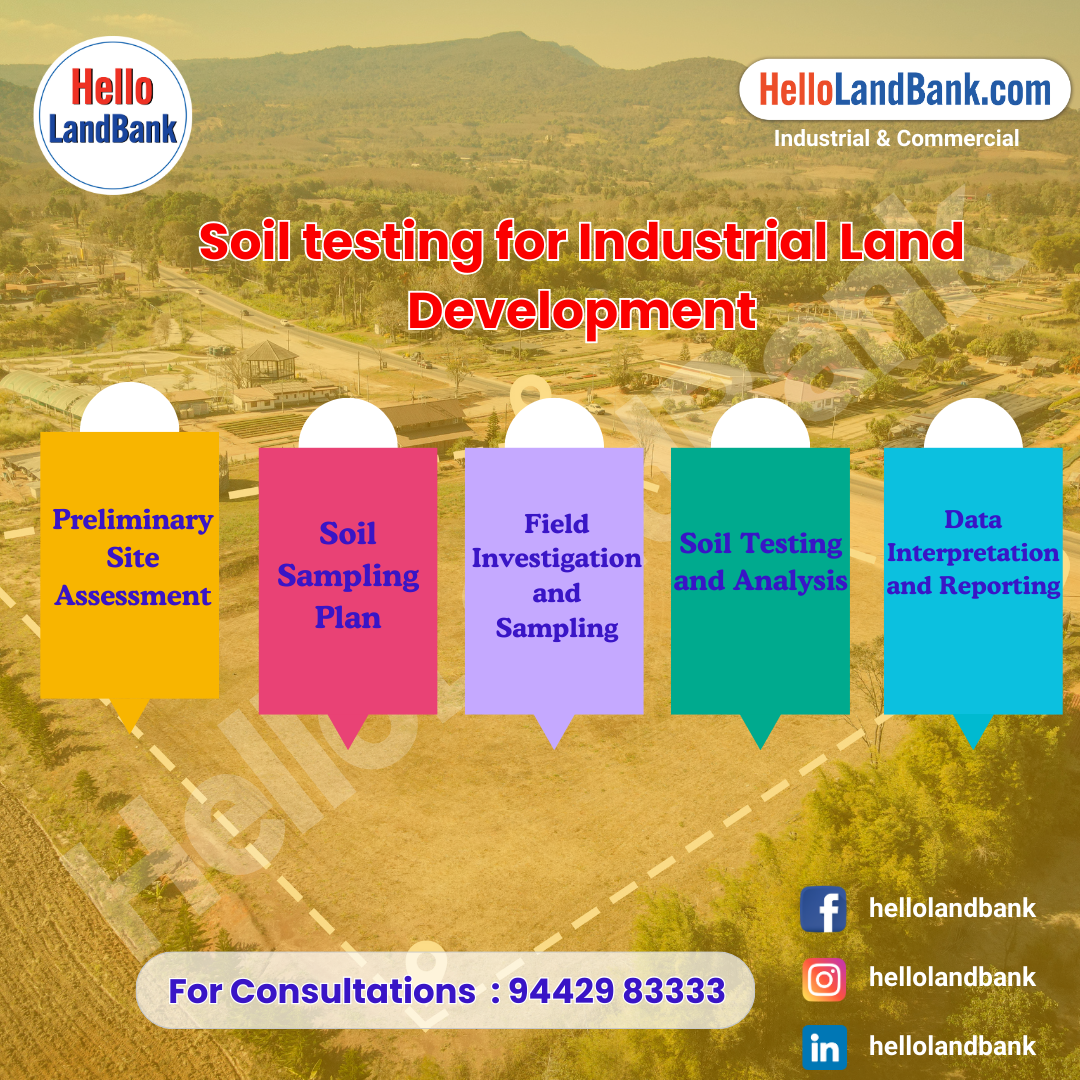Handling soil testing for industrial land development involves conducting comprehensive soil investigations to assess soil conditions, properties, and suitability for development. Here’s a step-by-step guide on how to handle soil testing for industrial land development.
1. Preliminary Site Assessment:
- Conduct a preliminary site assessment to identify potential soil-related issues and site-specific considerations. Review existing site documentation, geological maps, soil surveys, and historical records to gather information about soil types, geology, hydrology, and land use history. Identify areas of interest, potential contaminants, and environmental risks that may require further investigation.
2. Soil Sampling Plan:
- Develop a soil sampling plan outlining the objectives, scope, and methodology for soil testing activities. Determine the locations, depths, and number of soil samples to be collected based on site characteristics, project requirements, and regulatory guidelines. Consider factors such as site topography, soil variability, land use patterns, and potential sources of contamination when designing the sampling plan.
3. Field Investigation and Sampling:
- Conduct field investigations to collect soil samples from designated locations across the industrial site. Use appropriate sampling techniques such as auger drilling, soil borings, test pits, or trenching to access subsurface soil layers and obtain representative samples. Collect soil samples at various depths to assess soil properties, stratigraphy, and contamination profiles throughout the soil profile.
4. Soil Testing and Analysis:
- Submit soil samples to accredited laboratories for comprehensive testing and analysis. Conduct a range of soil tests to evaluate key soil properties such as texture, grain size distribution, moisture content, compaction, permeability, shear strength, bearing capacity, and contaminant concentrations. Perform chemical analyses, including soil pH, organic matter content, nutrient levels, and contaminant screening, to assess soil fertility and suitability for development.
5. Contaminant Assessment and Remediation:
- Conduct soil testing for potential contaminants, pollutants, or hazardous substances that may pose risks to human health or the environment. Test for common contaminants such as heavy metals, petroleum hydrocarbons, volatile organic compounds (VOCs), pesticides, and industrial chemicals associated with previous land uses or nearby sources of contamination. Assess contaminant concentrations, migration pathways, and potential impacts on soil quality, groundwater, and neighboring properties.
6. Data Interpretation and Reporting:
- Interpret soil test results and data analysis to evaluate soil conditions, properties, and suitability for industrial development. Prepare detailed soil investigation reports summarizing findings, laboratory results, interpretations, and recommendations for further action. Document soil characteristics, contamination risks, remediation options, and regulatory compliance considerations to guide decision-making and project planning.
7. Regulatory Compliance and Permitting:
- Ensure compliance with regulatory requirements and permitting obligations related to soil testing, environmental assessments, and remediation activities. Coordinate with regulatory agencies, environmental authorities, and local authorities to obtain necessary permits, approvals, and clearances for soil testing, site investigations, and remediation efforts. Address any regulatory concerns, permitting conditions, or compliance requirements identified during the soil testing process.
8. Risk Management and Mitigation:
- Develop risk management strategies and mitigation measures to address soil-related risks and uncertainties identified during soil testing. Implement remediation plans, containment measures, or engineering controls to mitigate soil contamination, stabilize soil conditions, and minimize environmental impacts. Monitor soil conditions, groundwater quality, and site conditions over time to ensure ongoing compliance and risk mitigation.
9. Consultation with Experts:
- Seek guidance and consultation from soil scientists, geotechnical engineers, environmental consultants, and regulatory experts with expertise in soil testing and site investigation techniques. Collaborate with qualified professionals to interpret soil test results, assess site conditions, and develop appropriate mitigation measures tailored to the specific needs and objectives of the industrial land development project.
10. Integration into Site Planning and Design:
- Integrate soil testing findings and recommendations into site planning, design, and engineering processes to inform land use decisions, infrastructure design, and construction practices. Consider soil properties, geotechnical considerations, and environmental constraints when designing foundations, grading plans, drainage systems, and site improvements to ensure compatibility with soil conditions and minimize risks associated with soil-related issues.
By following these steps and conducting thorough soil testing and site investigations, industrial land developers can assess soil conditions, identify potential risks, and make informed decisions to support safe, sustainable, and successful industrial land development projects. Effective soil testing practices are essential for mitigating environmental risks, ensuring regulatory compliance, and optimizing site utilization while protecting human health and the environment.




